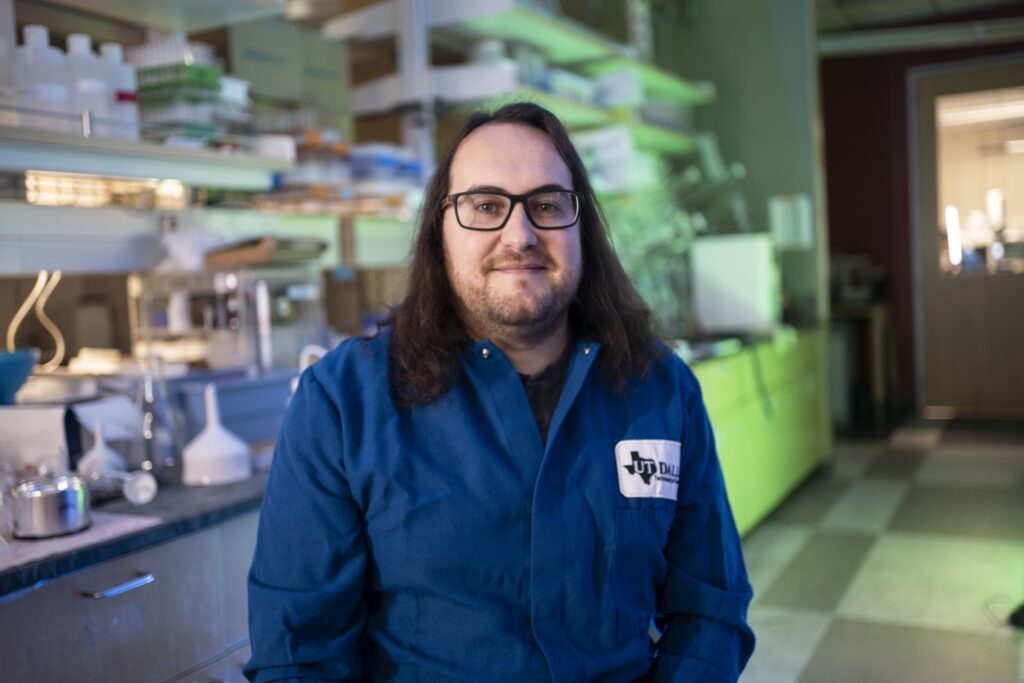Follow Emilie Bodoin on Linkedin or learn more about Pure Lithium on their website here. A link to our earlier news report and this interview pertains to can be found here. Read more about Pure Lithium here:
- Lithium metal to make traditional batteries obsolete, Pure Lithium CEO says | Hotter Commodities
- Pure Lithium Bets on Vanadium Cathodes to Save U.S. Battery Independence
In a significant breakthrough, Emilie Bodoin, the founder and CEO of Pure Lithium, is leading a revolutionary change in battery technology. Her company’s innovative use of vanadium-based cathodes is poised to redefine energy storage, offering greater efficiency, sustainability, and safety compared to traditional lithium-ion batteries.
As part of our in-depth exploration of this development, we had the privilege to speak with Emilie Bodoin. She shared invaluable insights into the challenges, innovations, and environmental benefits driving Pure Lithium’s vision for a sustainable future.
The following interview is presented unedited to preserve Emilie Bodoin’s original responses and provide an authentic glimpse into the cutting-edge advancements shaping the future of battery technology.
Can you elaborate on what specific challenges the Pure Lithium team encountered when integrating vanadium into the battery technology?
It seems counterintuitive, but one of the largest challenges is getting people to break out of the lithium-ion mindset and to truly embrace innovation.
There is a general lack of awareness about vanadium in the lithium-ion battery community, which is the dominant technology today. I have a special slide I use in my talks to remind people that, yes, vanadium is on the periodic table! Back in the 1990s, my Co-Founder and Pure Lithium’s CSO Professor Donald R. Sadoway found that it cycled it beautifully against lithium metal. Professor M. Stanley Whittingham, inventor of the lithium metal and lithium-ion battery, supplied the vanadium for the cathode we have most recently been working with. Now Don and I have a joint patent application with him too!
Vanadium is not used in today’s lithium-ion battery because, just like today’s graphite anode, pre-lithiating it is not commercially viable. Pure Lithium shifts the paradigm and we simply change how lithium is used today by putting it on the anode first and using a cathode that does not contain lithium. We just use lithium differently, and vanadium is the perfect pairing.
How does vanadium contribute to the overall efficiency and longevity of your batteries compared to traditional lithium-ion alternatives?
Vanadium makes our battery more efficient because we can achieve 400 wh/kg, far beyond today’s lithium-ion. Our vanadium-based cathodes provide more than a 50% increase in capacity over lithium iron phosphate (LFP). We can fit two lithium ions for every vanadium. There is no lithium in the vanadium cathode, so we eliminate the need to make lithium carbonate or lithium hydroxide as is necessary for NMC based cathodes. This is huge. Additionally, vanadium oxide itself doesn’t decompose and release oxygen until it reaches 1800° C, so this chemistry is intrinsically safer than LFP or NMC.
What are the primary environmental benefits of using vanadium in battery technology, and how does this align with Pure Lithium’s sustainability goals?
Vanadium is the fifth most common transition metal in the world, more abundant than nickel and cobalt, and it is frequently found in the same regions as lithium, including North America. In fact, the world’s largest producer of secondary vanadium is US Vanadium, located in Hot Springs Arkansas near the lithium rich Smackover region. For today’s lithium-ion battery, the lithium travels 55,000 miles around the globe from the ground into a device. That creates 802 kg of CO2 emissions for every metric tonne shipped. Our Brine to Battery™ electrodeposition technology requires no fresh water, unlike direct lithium extraction (DLE). It also drastically reduces manufacturing time, creating a lithium metal anode in one step, and with vanadium well within range of our future production sites, the environmental benefits are substantial.
Could you walk us through the innovative processes or technologies that have made Pure Lithium’s approach unique within the industry?
We are completely different than any other battery company out there today. We have even raised money differently than all the others. We are the only company that combines metal extraction with anode and then battery production. My co-founder Professor Donald Sadoway sits at the intersection of metal production and battery innovation, which is why I was adamant about starting Pure Lithium with him. While I was passionate about the lithium metal battery and getting it to market, I realized more than 10 years ago that it would never happen without the cost being lowered by orders of magnitude and the quality of the lithium, and subsequently the anode, being dramatically improved. Our electrodeposition process, I am proud to say, is truly innovative. Our approach to using lithium differently in a battery with a non-lithiated cathode, while not rocket science, is bold compared to any of our competitors who are simply trying to use existing lithium-ion battery materials to make a lithium metal battery. No one has gotten to market this way. You need bold, problem-solving innovation to bring a new battery to market, and that is what we are doing at Pure Lithium.
Given the current state of the market, what are some of the obstacles to scaling production and ensuring widespread adoption of vanadium-based batteries?
Access to capital is the major obstacle.
What potential applications do you foresee for this technology beyond conventional energy storage solutions?
Our lithium metal battery can be used anywhere lithium-ion batteries are being used today, that includes consumer electronics and drones, which will be our first market entrance, as well as electric vehicles, grid-scale energy storage, and space applications. The two- and three-wheel vehicle market in places like India could be transformative for climate change, and we have advantages over lithium-ion in hot places.
How does your team plan to address concerns about vanadium’s cost and availability, especially in light of the increasing demand for battery technology?
Our team is not concerned about vanadium’s cost or availability, it is simply a matter of executing supply agreements, and we have the experience to do this. Rio Tinto’s former head of exploration, a 24-year veteran of the mining industry, works with us. Our first large investor was Robert Friedland, arguably the world’s most famous mining entrepreneur. Our largest investor to date is Oxy Low Carbon Ventures. Not only do they have a lithium company, TerraLithium, but they have substantial oil production, and vanadium is a byproduct of oil production.

Hassan graduated with a Master’s degree in Chemical Engineering from the University of Chester (UK). He currently works as a design engineering consultant for one of the largest engineering firms in the world along with being an associate member of the Institute of Chemical Engineers (IChemE).



